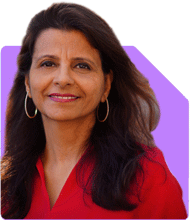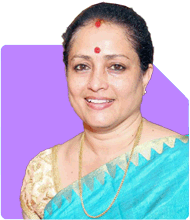Komal Jethmalani | Answer |Ask -Follow
Dietician, Diabetes Expert - Answered on Oct 07, 2023
She specialises in weight loss and diabetes management.
Jethmalani has completed her MSc in food and nutrition from SNDT University and trained at Jaslok Hospital.
She is a NDEP-certified diabetes educator.... more

Hello Mam, I am 69 . Like to have some advice on the daily food intake to control blood sugar without medication. The routine food intake Morning at 6 am 1 glass ajwan seeds water with palm jaggery drink + 1 glass black light coffee. At 9.30 beak fast 2 chappti of mixed flour wheat, flax seeds, little millet with veg curry + 1 or 2 elaichi banana 2 p.m. lunck 2 chappati same combination with veg curry + some non veg fish or small portion of meat + cut mix seasonal fruits such as apple, pappaya, peer, mango etc. 5.30 pm green tea with snaks such as diet chivda/brown bead with butter + half of madras banana. 9.30 p.m. dinner 1 bowl salad (cucumber/tomotto/onion/ dressing olive oil/apple cider venegar filtered + small portion of scrambled egg white + cut mix seasonal fruits such as apple, pappaya, peer, mango etc. Sleep time 11 -11.30 Pls. adv. if any changes required in the food intake and or life style.
You may like to see similar questions and answers below
Komal Jethmalani | Answer |Ask -Follow
Dietician, Diabetes Expert - Answered on Apr 02, 2022
Komal Jethmalani | Answer |Ask -Follow
Dietician, Diabetes Expert - Answered on Oct 19, 2020
Dr Karthiyayini Mahadevan | Answer |Ask -Follow
General Physician - Answered on Oct 08, 2024
Dr Chandrakant Lahariya | Answer |Ask -Follow
Diabetologist, Consultant Physician, Vaccine Expert - Answered on Nov 21, 2024
Komal Jethmalani | Answer |Ask -Follow
Dietician, Diabetes Expert - Answered on Oct 17, 2025
Nayagam P P |10859 Answers |Ask -Follow
Career Counsellor - Answered on Dec 19, 2025
Ramalingam Kalirajan |10905 Answers |Ask -Follow
Mutual Funds, Financial Planning Expert - Answered on Dec 19, 2025
Ramalingam Kalirajan |10905 Answers |Ask -Follow
Mutual Funds, Financial Planning Expert - Answered on Dec 19, 2025
Ramalingam Kalirajan |10905 Answers |Ask -Follow
Mutual Funds, Financial Planning Expert - Answered on Dec 19, 2025
Radheshyam Zanwar |6751 Answers |Ask -Follow
MHT-CET, IIT-JEE, NEET-UG Expert - Answered on Dec 19, 2025
Radheshyam Zanwar |6751 Answers |Ask -Follow
MHT-CET, IIT-JEE, NEET-UG Expert - Answered on Dec 19, 2025
Samraat Jadhav |2514 Answers |Ask -Follow
Stock Market Expert - Answered on Dec 18, 2025
Reetika Sharma |432 Answers |Ask -Follow
Financial Planner, MF and Insurance Expert - Answered on Dec 18, 2025
Reetika Sharma |432 Answers |Ask -Follow
Financial Planner, MF and Insurance Expert - Answered on Dec 18, 2025
Reetika Sharma |432 Answers |Ask -Follow
Financial Planner, MF and Insurance Expert - Answered on Dec 18, 2025


























